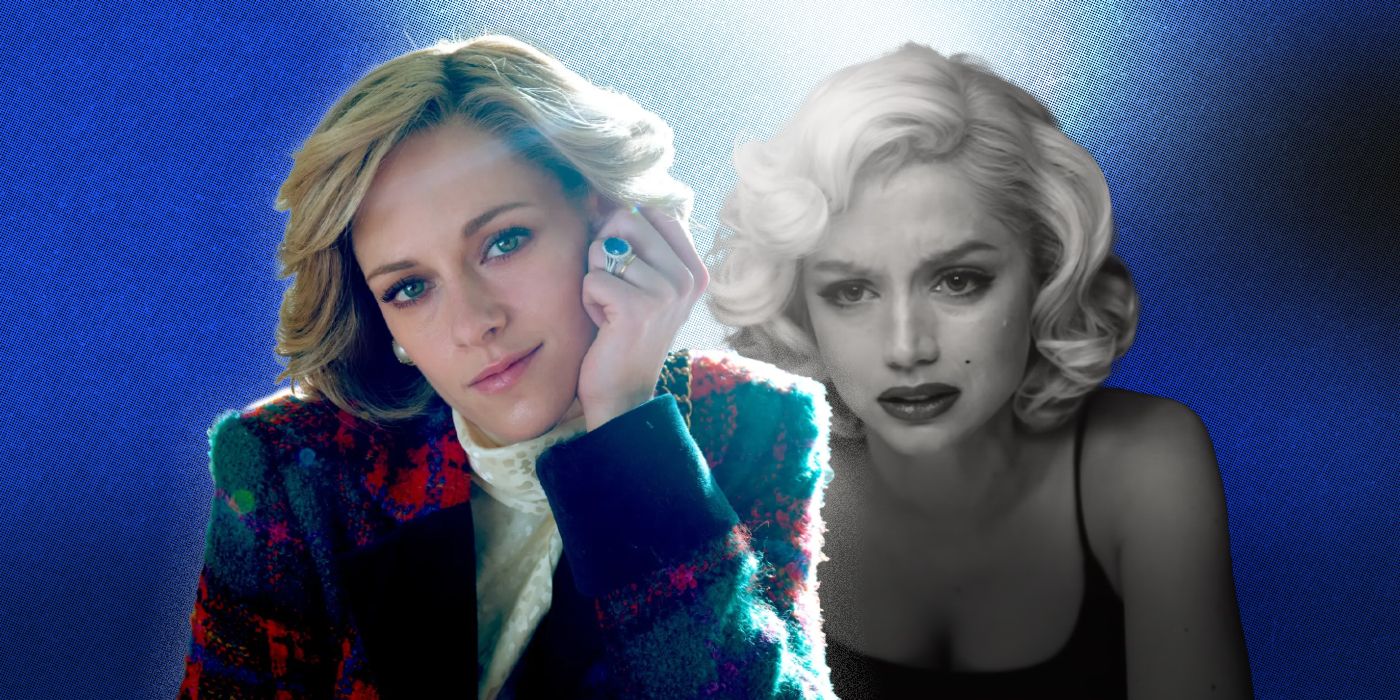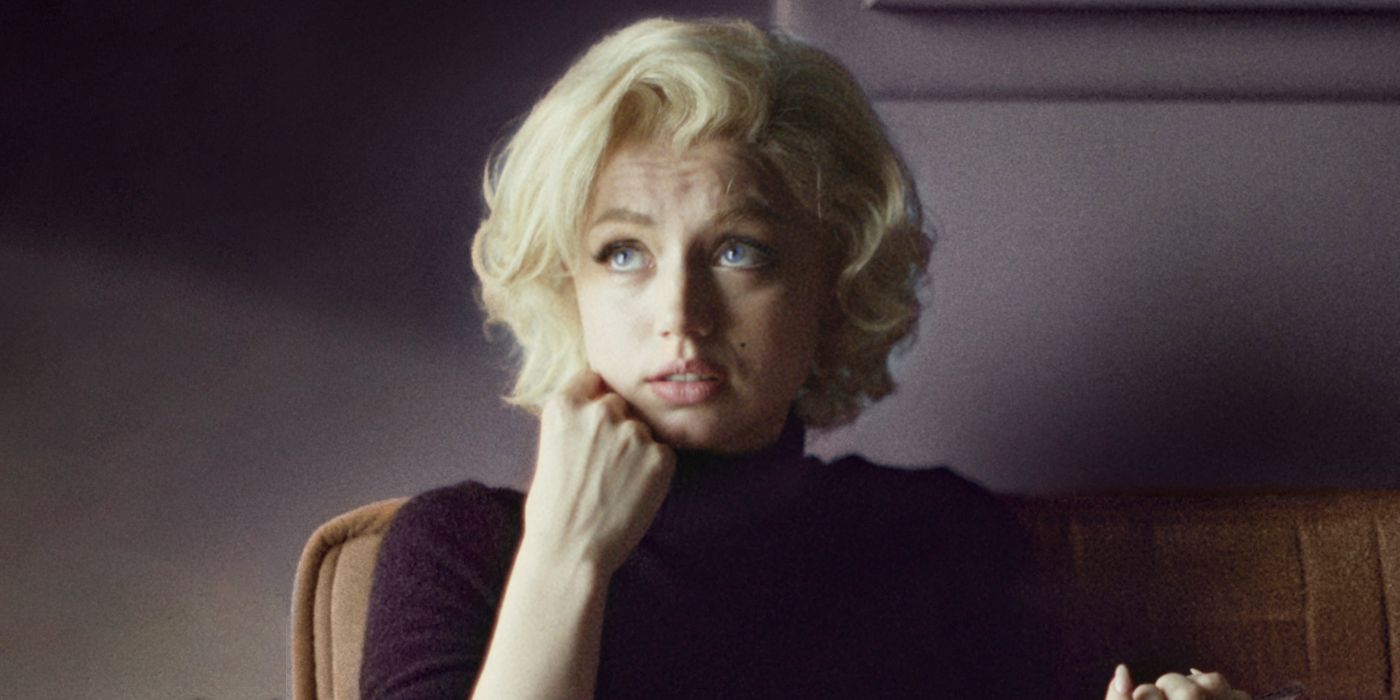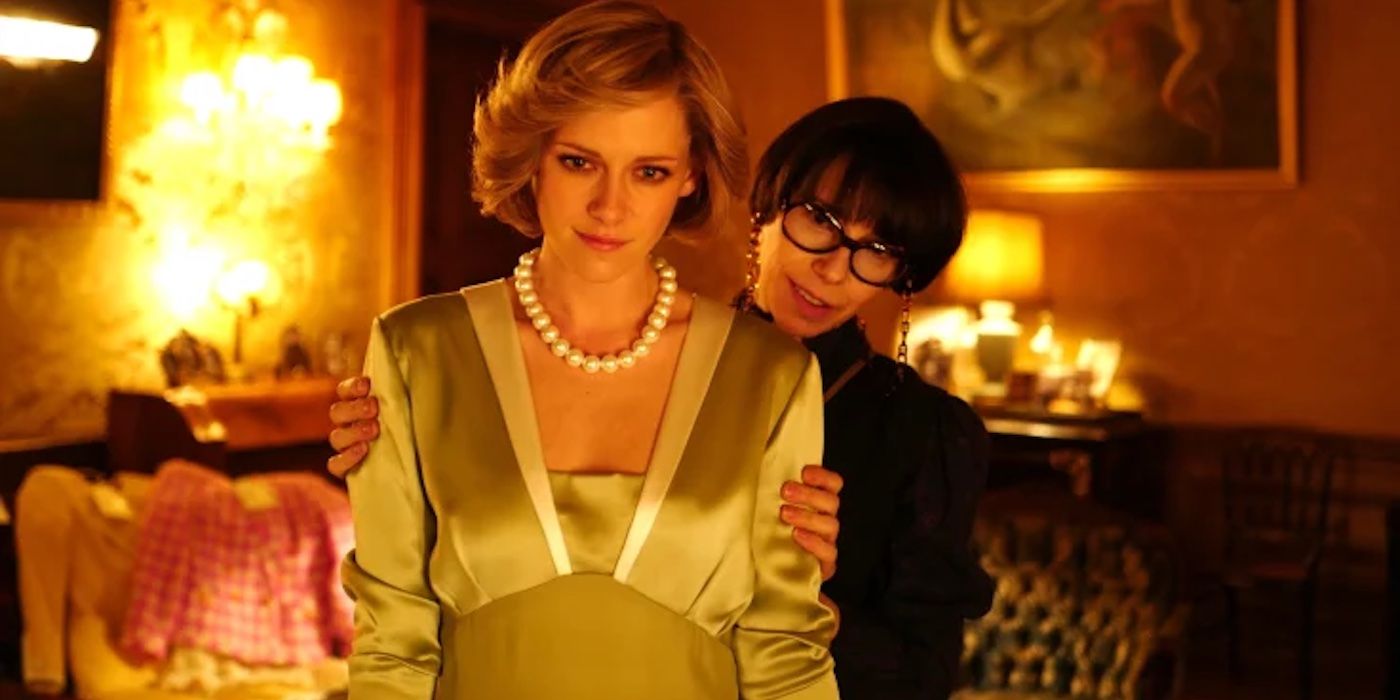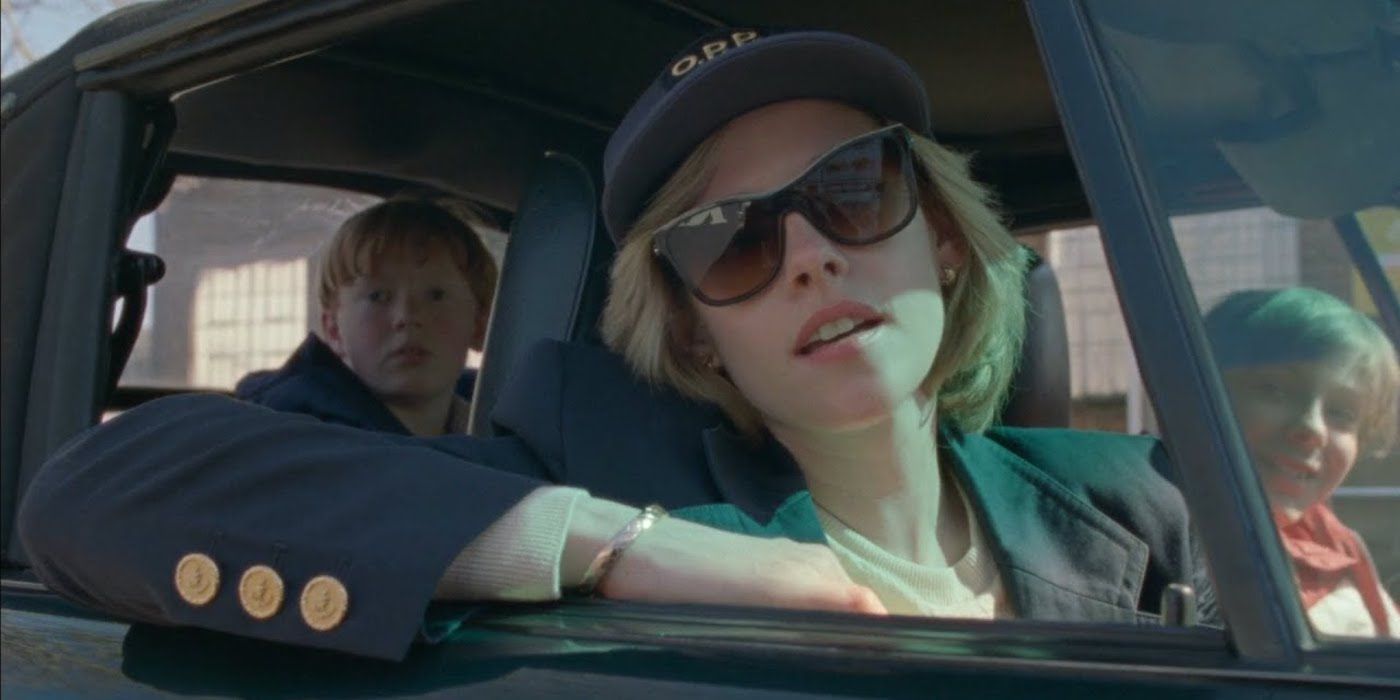Blonde, Andrew Dominik’s controversial sorta-biopic about Marilyn Monroe, can be compared to any number of movies, from the surrealist nightmares of David Lynch to Mouchette, Robert Bresson’s infamous cavalcade of human misery. But perhaps the film it most closely resembles, at least in terms of ambition, is Spencer, Pablo Larraín’s controversial sorta-biopic about Princess Diana that premiered a little over a year before Blonde at the Venice Film Festival. Both films take a look at the tumultuous, tragic lives of their respective cultural icons, whose struggles with mental illness were exacerbated by the crucible of fame.
Both films make risky creative choices that some might call bold and others might call tasteless: Princess Diana hallucinating herself eating her own jewelry, or Marilyn Monroe having a conversation with the fetus of her unborn child. And both films distance themselves from the “biopic” label, with Spencer being billed as “a fable based on a true tragedy” and Blonde being based on a novel by Joyce Carol Oates that takes significant liberty with Monroe’s life. And yet, there’s one key difference between Spencer and Blonde: Spencer pulls off its revisionist biopic conceit, and Blonde does not.
The problem is not necessarily a matter of content. Blonde has attracted intense controversy due to its graphic depiction of rape and other scenes involving Monroe’s physical and emotional torment, not all of which necessarily happened in real life. For some, that’s a deal-breaker in and of itself, but anything can be made into good art. There could absolutely be a great movie that obsessively documents Marilyn Monroe’s litany of personal trauma, just as there could be a tasteless movie where Princess Diana sees Anne Boleyn’s ghost and daydreams about self-mutilation. But a few factors separate Spencer’s approach from Blonde’s, and those few things make Spencer the great film it is while throwing Blonde’s flaws into sharper relief.
Time Frame
There are two different approaches when it comes to making a biopic. Some, like Malcolm X and Ray, take the form of a typical biography, summarizing their subject’s life from beginning to end; this works best when the subject has led a particularly rich, varied life. Others, like Capote and The Young Victoria, narrow their focus to one specific part of their subject’s life, resulting in a movie that’s smaller in scale but capable of gleaning key insights from a few pivotal moments. Spencer, like Larraín’s previous biopic, Jackie, takes the latter approach. It’s set over three days during Christmas in 1993, a time when Diana (Kristen Stewart), humiliated by her husband’s affair, was buckling under public and private scrutiny. Because it encompasses such a brief period of time, Spencer is able to tell a focused, concise story that serves as a microcosm of Diana’s life: her struggles with her mental health, her relationships with Prince Charles and the monarchy, and her willingness to flout convention to do what she feels is right.
Blonde, by contrast, takes the cradle-to-grave approach - but rather than using that structure to explore a multifaceted life, it uses its three-hour runtime to tell a story of endless, monotonous suffering. Marilyn Monroe’s childhood is dominated by her violent, unstable mother, Gladys (Julianne Nicholson), who tries to drown her and almost lets her burn to death in a fire. When she’s grown up, played by Ana de Armas, Monroe is leered at and degraded by the sleazy men of Hollywood, culminating in her graphic rape at the hands of a studio executive. She becomes an icon, but is treated as a piece of meat all the while, surrounded by throngs of paparazzi with sneering, demonic faces. She badly wants a child, but suffers through forced abortions and miscarriages. She yearns for a husband/father figure, but each treats her worse than the last (except for Adrien Brody’s Arthur Miller, who provides a brief moment of happiness before abandoning her like everyone else.) Any individual narrative beat might have been a compelling premise for a revisionist biopic, but taken as a whole, Blonde is an exercise in numbing sadism - if not towards Monroe, then certainly towards its audience.
Unconventional Biopics
This is not to say that Blonde needed to be the feel-good crowd-pleaser of the year. There’s nothing inherently wrong with frustrating the audience’s expectations and desires; in fact, Spencer did just that the year before, leaving those who wanted a more conventional experience angered and confused. But there was something subversive about Spencer’s defiance of royal biopic norms: it was a reminder to those who put Diana on a pedestal that the People’s Princess was not a one-dimensional saint. Instead, she was a complex, troubled person, who alternately engaged with and struggled against a rigid monarchy and a ravenous tabloid press. The fact that Spencer lured audiences in with its prestige trappings before confronting them with a warts-and-all portrait of their beloved princess is, frankly, really damn cool.
Blonde’s celluloid atrocity exhibition is many things - sickening, painful, frightening, deadening - but there’s nothing subversive about it. By this point, Marilyn Monroe’s troubled private life and barbiturate overdose are as much a part of her legend as that billowing skirt or “Happy Birthday, Mr. President.” She’s become the archetypal tortured starlet who shined bright before burning out; hell, Elton John wrote the original version of “Candle in the Wind” about her before he repurposed it for Princess Diana. The fact that Monroe suffered is common knowledge, but Blonde is so proud of itself for this insight that it can scarcely move past it. It focuses on the worst, most painful moments of Monroe’s life, and uses its license as fiction to fill in the blanks with more pain and humiliation. Norma Jeane receives hate mail smeared with feces. Secret Service agents kidnap her, so she can be orally raped by John F. Kennedy. There’s an incredibly upsetting bit of business involving a tiger plushie. All the while, she’s portrayed not as the sharp, gifted woman she was, but as a girlish, easily-duped lamb being led from slaughterhouse to slaughterhouse. It’s cruel but worse than that, it’s obvious.
Happy vs. Tragic Ending
At the end of Spencer, Princess Diana is free. After being driven to the brink of suicide, she has asserted her power, pulling her sons away from their pheasant shoot and driving to London - away from stuffy old Sandringham House, and by extension, away from the monarchy. She drives with her convertible’s top down, wearing sunglasses and feeling the wind rush through her hair. The three of them sing along to “All I Need Is A Miracle” by Mike + the Mechanics before stopping to get KFC. At the end of the film, Diana is sitting by the bank of the Thames, smiling to herself. Her victory may be temporary - and almost certainly fictional - but it’s a victory all the same. It sends us off on a triumphant note, providing catharsis to the audience and honoring the memory of the tender, free-spirited Diana. It’s why the film’s look at her mental illness and bulimia feels empathetic rather than exploitative: Spencer is interested in more than her pain.
By this point, it should not come as a surprise that Blonde does not end on a triumphant note. It ends the only way it could end, the only way Oates and Dominik would allow it to end: in a haze of alcohol, barbiturates, and suicidal despair. Through painstaking recreations of iconic scenes and photoshoots, Blonde brought Marilyn Monroe back to life, only to kill her again with twice the sadism. In her obituary of the radical feminist writer Andrea Dworkin, Susie Bright described her worldview as a place “where the Final Girl never gets the chance to slay the monster; she only dies, dies, dies, with the cries of the angry mourners to remember her.” Perhaps this mixture of rage and empathy is what Oates and Dominik intended to evoke when making Blonde. But surely it would be kinder to just let Norma Jeane get some sleep?




